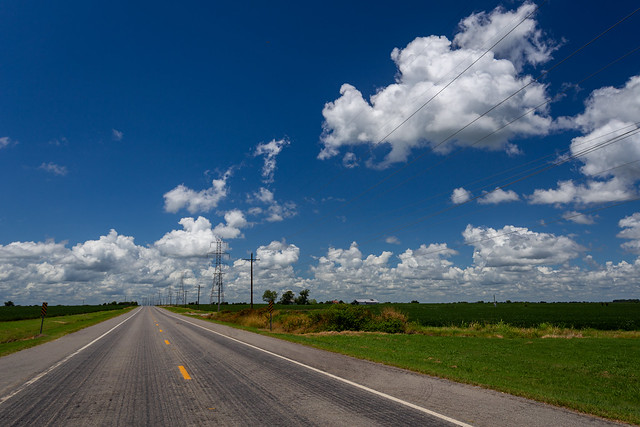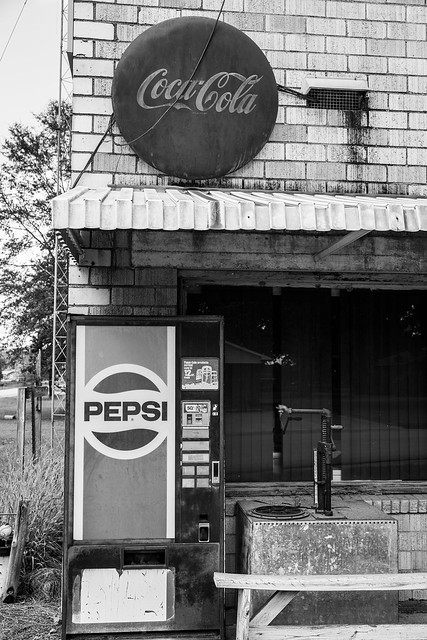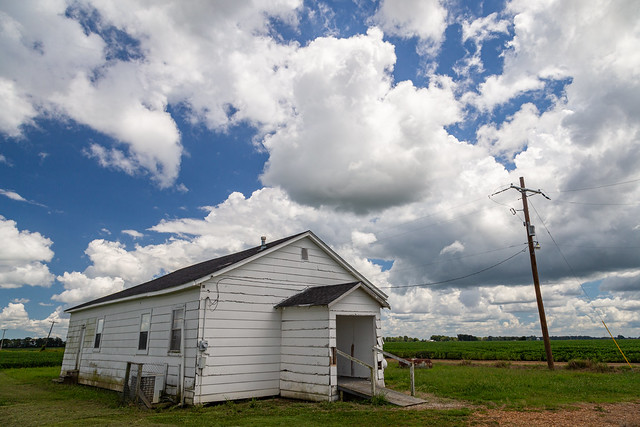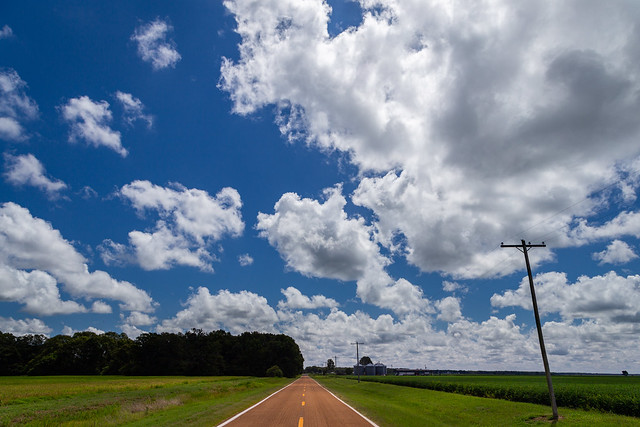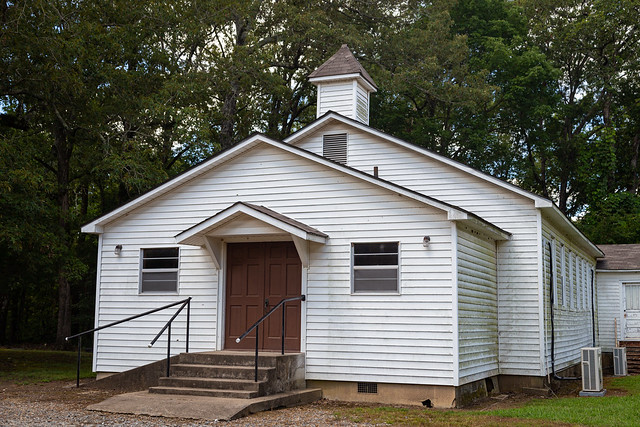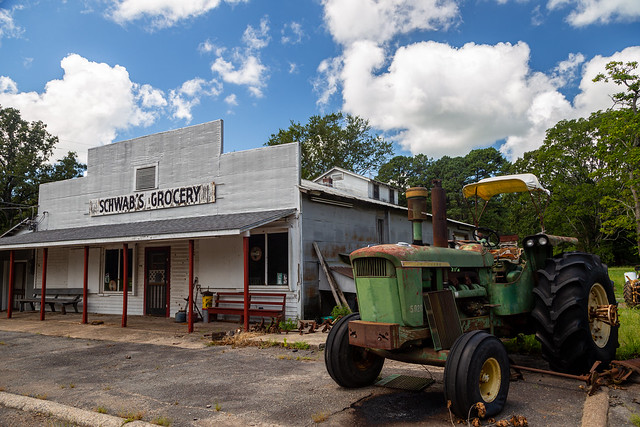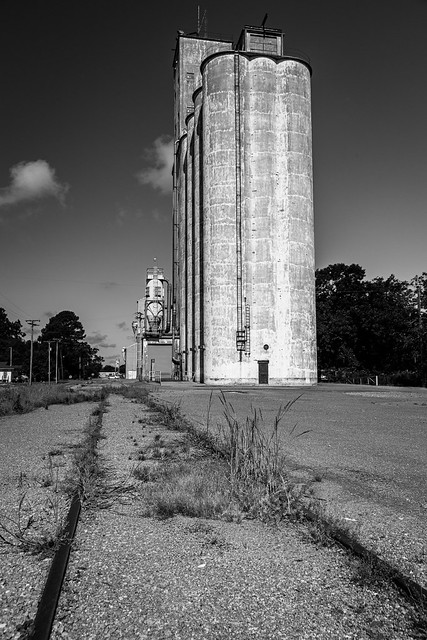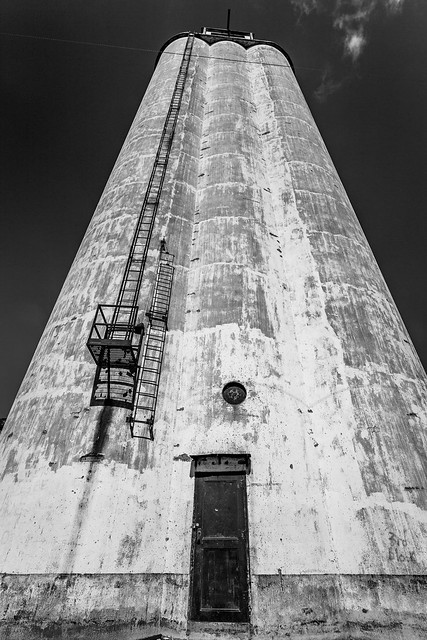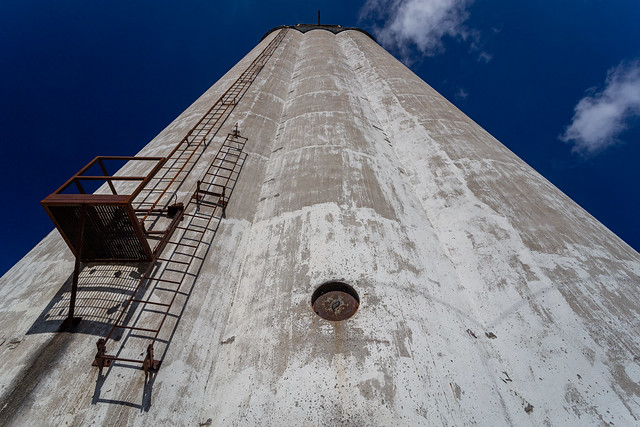For the past few years I've been working on a photography project that has striven to chronicle the architecture and landscape of the Arkansas Delta. There was actually supposed to be an exhibition of some of the pictures this summer, but of course Covid-19 had other ideas. The exhibition may be rescheduled for next year, when (hopefully) things will have gotten better outside. But until then I have some extra time to take a few more extra pictures of the Delta. So I planned this trip in order to squeeze in as much things as possible into a day, to see as much as I could (also we are having a baby next week so I won't be able to travel all that much, especially during a pandemic).
I headed further down the road, looking for anything old or interesting along the way. Down a rocky and dusty dirt road sat this collection of metal silos, sitting under a sky filled with fluffy white clouds.



Down the road, a puddle had developed that perfectly reflected the clouds above.
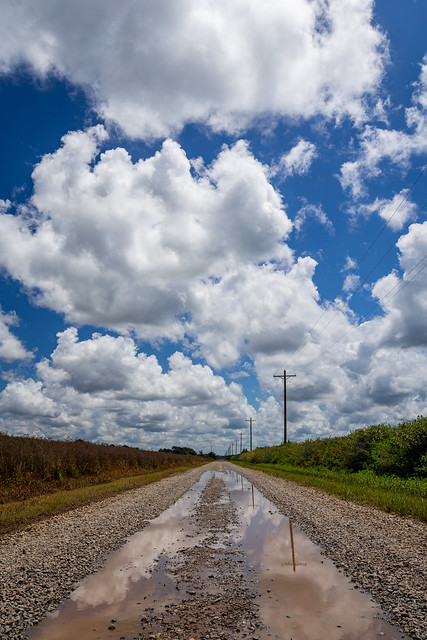
Back on the main road, I drove by this old building that was baking under the warm Summer sun. The years had turned the metal walls into a mixture of rust and faded paint, showing a spectrum of colors.
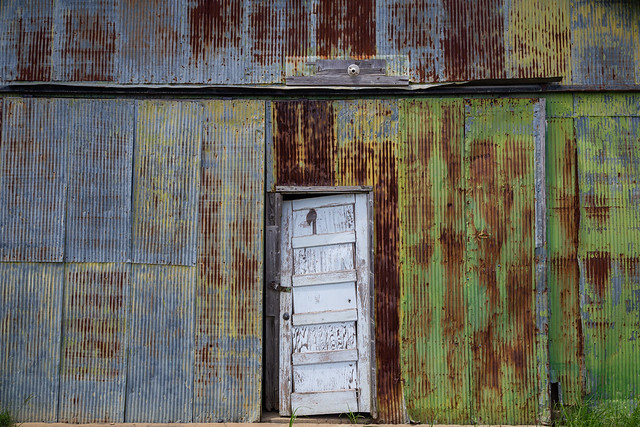
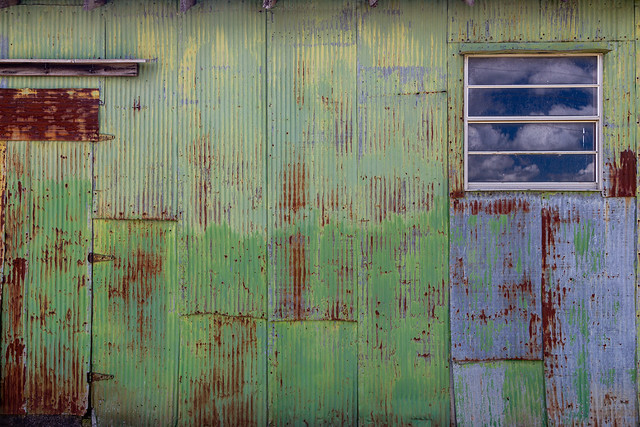
From there I finally arrived in the small town of St. Charles, which sits along the White River along the edge of Arkansas County.
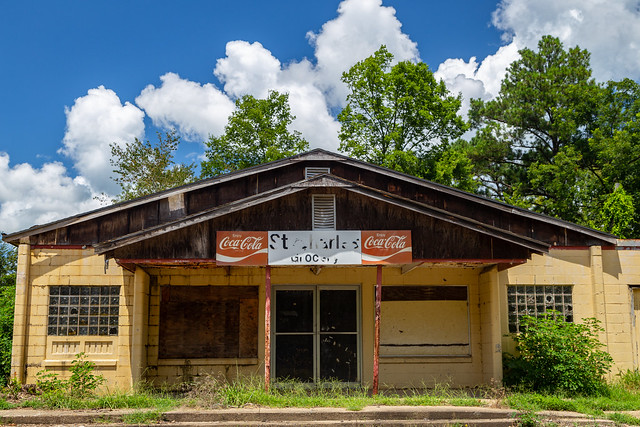
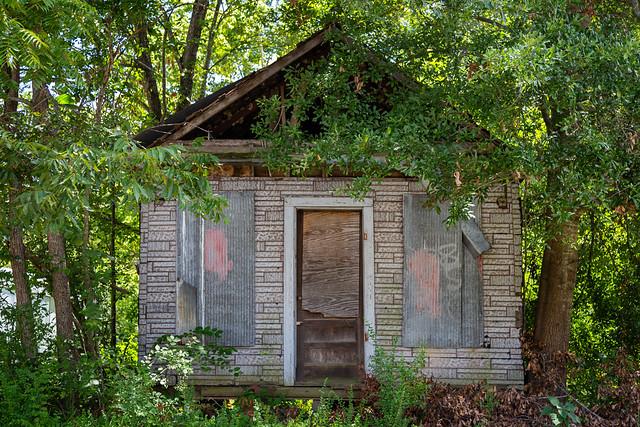

Situated in the middle of town is the old J. Deane and Son hardware store, which was established way back in 1890. The store operated until 1976, but the building is empty now and partially collapsing.


Someone was kind enough to leave an old truck parked outside, which definitely helped make the old place a wee bit more photogenic.
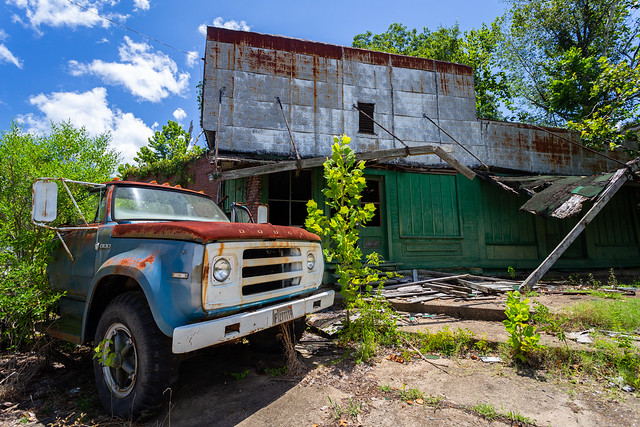
St. Charles is an old river town. It was officially incorporated in 1880, but there was a settlement here back during the Civil War. In June of 1862, Union troops sent a flotilla up the White River and met fire from Confederate troops set up around St. Charles. A shot from a canon in St. Charles struck the Union ironclad USS Mound City, piercing the steam drum and releasing scalding steam across the boat. The majority of sailors on the boat were killed, and those that jumped overboard were then shot by Confederate snipers. It is said that this was one of the most deadly single shots fired during the Civil War. There is a monument to the vicitims in St. Charles, which was built in 1919. It is a rare Civil War monument in Arkansas because it actually honors Union soldiers (along with a few Confederates who were killed during the skirmish). It is also a rare monument because it sits right in the middle of the street. It's amazing that this has stood for over a century and it hasn't been taken out by a bad driver.

The inscription on the monument is hard to read in the picture, but it states: "NEAR THIS SPOT, ON JUNE 17, 1862 / A DECISIVE BATTLE WAS / FOUGHT HERE BETWEEN THE CONF- / -EDERATES ENTRENCHED AND / THE FEDERAL GUNBOATS. / HERE WAS FIRED THE MOST DESTRUCTIVE SINGLE SHOT / OF THE CIVIL WAR, CAUSING AN / EXPLOSION ON THE “MOUND CITY” AND THE LOSS OF 148 / KILLED, BESIDES MANY WOUNDED. /O, WHERESOEVER THESE MAY BE / BETWIXT THE SLUMBER OF / THE POLES, TO-DAY THEY / COUNT AS KINDRED SOULS."
Just outside of St. Charles was another historical event, although this one does not have any historical markers. According to the Encyclopedia of Arkansas History:
Over the course of four days in the first week of spring 1904, a succession of white mobs terrorized the black population of St. Charles (Arkansas County). They murdered thirteen black males in this town of about 500. Given the death toll, it may have been the deadliest lynching in American history. The murderers were never identified in either public reports or eyewitness accounts, and the scant surviving evidence in newspapers and manuscripts lists only the victims, not the killers or their possible motives.
On Monday, March 21, on the dock at the White River crossing in St. Charles, Jim Searcy, a white man, argued over a game of chance with a black man named Griffin, with whom he was gambling. The disagreement escalated to blows. A policeman arrested Griffin for assault and informed the black man that he was about to be hanged. Griffin struck the officer, grabbed his gun, and fled.
Griffin went into hiding, but angry white mobs were determined to find him. Whites summoned from surrounding towns and the countryside arrived from DeWitt (Arkansas County), Clarendon (Monroe County), Ethel (Arkansas County), and Roe (Monroe County). On the afternoon of Wednesday, March 23, whites on horseback roamed the countryside, accosting black citizens on sight. Those who resisted were shot. Between sixty and seventy black men, women, and children were driven from their homes and fields and then penned into a warehouse. That night, white mobs around the structure demanded to torch the building and burn all the black people imprisoned inside it. As a white witness later testified to the mob’s intent, “[T]hey wanted to exterminate the negro race.” According to a manuscript source, leaders of the mob insisted on restraint. Some of the rioters began to plead for “special negroes” who should be spared. Others urged caution on behalf of the good name of the town of St. Charles.
Around 3:00 in the morning of Thursday, March 24, the whites stormed the building, took six black men from the scores of captives, and marched them to the high point on the highway from St. Charles to De Witt, the county seat. They made the men stand in a line and then shot them dead.
On Sunday, March 27, the Arkansas Gazette, in the most detailed coverage of the killings, published a list of the dead men: Abe Bailey, Mack Baldwin, Will Baldwin, Garrett Flood, Randall Flood, Aaron Hinton, Will Madison, Charley Smith, Jim Smith, Perry Carter, Kellis Johnson, Henry Griffin, and Walker Griffin; the man originally arrested and his brother were murdered on Saturday. The Griffins bring the number killed to thirteen.
If the killings at St. Charles are viewed as a single episode, with a body count of thirteen, then the incident is the single deadliest mass lynching in American history. But for a homicide to qualify as lynching, according to the standard scholarly definition of lynching, a minimum of three perpetrators had to participate in each murder—it is in that sense that lynching is a public event. Because the number of murderers associated with each killing in St. Charles remains unknown, some of the fatalities may not be classified as victims of lynching.
It's hard to know where exactly the murders occurred based off of the historical evidence, but this was taken along the road between St. Charles and DeWitt. It's a mundane and typical scene, which hides the dark scar that runs beneath this stretch of road.
